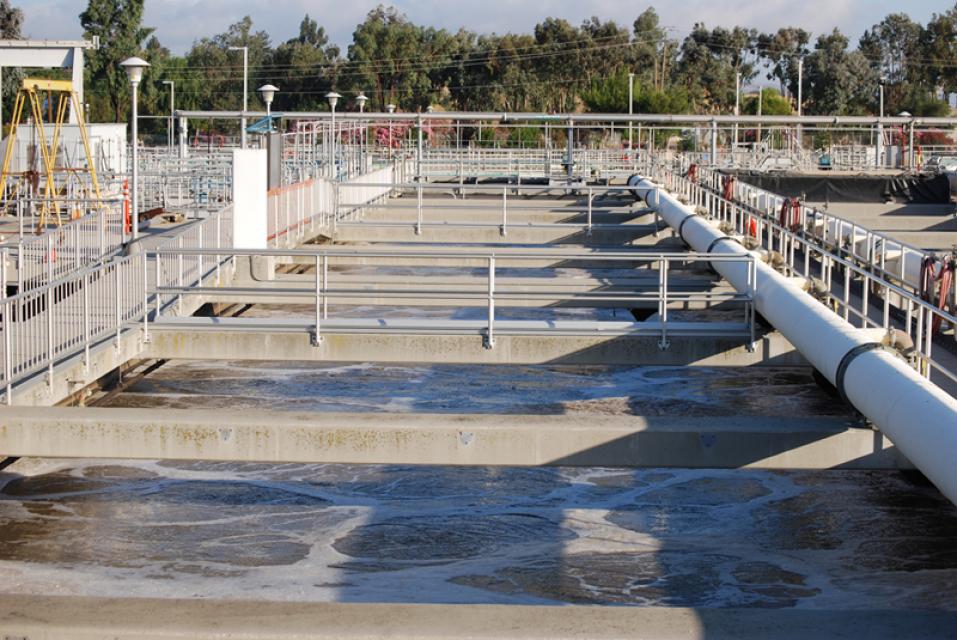Trustworthy Wastewater Services Supported by Years of Professional Experience
Trustworthy Wastewater Services Supported by Years of Professional Experience
Blog Article
Recognizing Wastewater Treatment Processes and Their Ecological Impact
The details of wastewater treatment procedures play a pivotal duty in mitigating environmental obstacles connected with water air pollution. Each stage, from initial to innovative treatments, is made to address certain impurities, eventually guarding both public health and water ecosystems. Nevertheless, in spite of technical developments in treatment performance, substantial challenges continue, consisting of the monitoring of recurring pollutants and the ramifications of nutrient overflow. As we discover the complexities of these processes, it ends up being important to wonder about just how much existing methodologies can evolve to satisfy the growing demands of sustainability and environmental preservation.
Overview of Wastewater Therapy
Exactly how is wastewater transformed into a safe resource for the setting? Wastewater therapy is an important process made to eliminate contaminants from utilized water, consequently guarding public wellness and shielding ecosystems. This process starts with the collection of wastewater from household, commercial, and commercial resources, which is then directed to therapy facilities.
At these facilities, different physical, chemical, and biological techniques are employed to deal with the wastewater. Preliminary testing gets rid of large particles, complied with by sedimentation to separate larger solids. Consequently, organic therapies, such as activated sludge procedures, utilize microbes to break down natural matter. These approaches not only reduce toxin levels but likewise help with the recovery of useful nutrients.
The treated effluent can be securely discharged right into natural water bodies or recycled for irrigation and commercial purposes, advertising resource preservation. In addition, the treatment procedure generates biosolids, which can be repurposed as plant foods or dirt changes, further improving sustainability.
Phases of Treatment Procedures
The wastewater therapy process commonly is composed of 3 primary phases: preliminary, main, and secondary therapy. Each stage offers a distinct function in lowering the pollutant tons and ensuring the effluent satisfies environmental requirements prior to discharge.

The key therapy phase focuses on the physical separation of suspended solids from the wastewater. Through sedimentation, heavier particles work out at the end of sedimentation tanks, forming sludge, while lighter materials, such as oils and greases, float to the surface and are skimmed off. This process significantly decreases the organic and inorganic load in the wastewater.
Second treatment is a biological procedure aimed at more minimizing the concentration of natural issue. This stage is crucial for accomplishing the necessary biochemical oxygen need (BODY) decrease, eventually leading to cleaner effluent ready for discharge or more treatment.

Advanced Treatment Technologies
Adhering to the secondary therapy processes, progressed treatment innovations play hop over to these guys a vital duty in further boosting the quality of dealt with wastewater. These technologies are created to remove recurring impurities that are not successfully removed during key and secondary treatments, ensuring the effluent satisfies rigorous regulatory requirements.
Amongst the widely used innovative treatment techniques are membrane layer filtering, reverse osmosis, and progressed oxidation procedures. Membrane filtering, consisting of microfiltration and ultrafiltration, works in separating great fragments, pathogens, and colloids from the water (Wastewater). Reverse osmosis uses semi-permeable membrane layers to get rid of dissolved solids, resulting in top notch water ideal for various applications
Advanced oxidation processes (AOPs) utilize solid oxidants to weaken organic contaminants, consisting of drugs and individual treatment items that are resistant to conventional treatment. These techniques boost the biodegradability of intricate compounds, facilitating their removal.
One more considerable modern technology is using organic nutrient elimination procedures, which specifically target nitrogen and phosphorus, avoiding eutrophication in getting water bodies. In general, sophisticated treatment innovations are necessary for attaining greater degrees of filtration, advertising water reuse, and securing public health and wellness while attending to the difficulties connected with wastewater administration.
Environmental Benefits of Treatment
Numerous environmental benefits arise from effective wastewater therapy procedures that add to ecosystem health and wellness and sustainability. Mostly, these processes considerably minimize the release of damaging contaminants into all-natural water bodies, which aids preserve water environments. By removing contaminants such as hefty steels, nutrients, and virus, treated wastewater reduces the threat of waterborne conditions and promotes biodiversity in marine more info here settings.
Additionally, wastewater treatment centers commonly utilize advanced modern technologies that allow water recycling and reuse. This practice not just conserves fresh water resources but additionally decreases the need on natural water products. Improved nutrient removal from wastewater can likewise prevent eutrophication, a procedure that causes algal blossoms and subsequent oxygen deficiency in aquatic systems.
In addition, effective therapy processes can lessen greenhouse gas emissions, specifically methane and nitrous oxide, which are usually released throughout untreated wastewater disintegration. By capturing and using biogas from anaerobic digesters, centers can convert waste right into renewable power, thereby adding to a decrease in fossil fuel reliance.
Obstacles and Future Patterns
While the ecological advantages of wastewater treatment are clear, a number of challenges continue that impede optimal outcomes in this area. One significant issue is maturing framework, which frequently causes inefficiencies and enhanced functional prices - Wastewater. Many treatment plants were made decades back, and their abilities do not straighten with modern demands, original site that include more stringent regulatory requirements and greater quantities of wastewater due to urbanization

Looking in advance, there is an expanding emphasis on resource recuperation and round economic climate principles within wastewater therapy. Advancements such as anaerobic digestion, which can produce biogas, and progressed purification modern technologies are getting traction. These approaches not only enhance therapy effectiveness but additionally promote sustainability.
Inevitably, attending to these difficulties calls for partnership among stakeholders, financial investment in innovation, and a dedication to continuous study. By accepting these trends, the wastewater therapy sector can progress to meet the needs of a changing setting and society.
Verdict
In verdict, wastewater therapy processes play a vital function in boosting ecological high quality and public wellness. The multi-stage therapy structure, paired with advanced innovations, efficiently mitigates pollution and promotes lasting water management.
Report this page